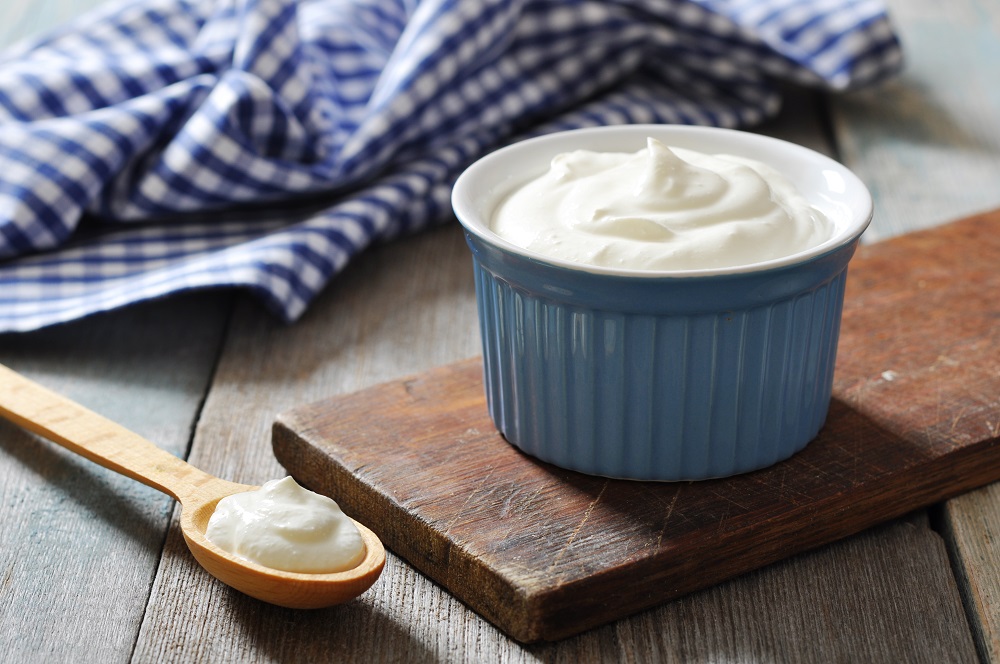
25 Feb Make Your Own Icelandic Skyr
Skyr (pronounced “skeer”) is a cultured dairy product similar to ultra-thick yoghurt, and a long-time staple in Icelandic cuisine. It may have been around for centuries, but this treat from the frozen north has recently started a red-hot trend, as more people discover the health benefits and all the rich, satisfying flavours and textures of Skyr. Find out what makes this dish a national treasure; and learn the secrets to making your very own thick and creamy Icelandic skyr at home.
What is Skyr?
Icelandic skyr is essentially a strained skim milk cheese, marketed as a yoghurt. It’s ultra-thick (famously, if you turn a spoonful of skyr upside down it won’t fall off!) and has a rich, tangy flavour.
Benefits of Skyr
- Low in fat
- High in protein
- A rich source of calcium; great for bone health
- Source of live cultures; helps to balance intestinal flora
Making your own skyr is quite an involved process – but lots of fun and certainly worth the effort!
Using Plant-Based Rennet to Curdle your Skyr
Before we get started on our skyr recipe – a note on rennet. This natural enzyme is the substance that acts as a coagulant, and works to curdle the milk, giving you thick and firm skyr. Now for us greenies, animal-derived rennet simply isn’t an option. Animal rennet is naturally found in the stomachs of young mammals (eg calves), to help them digest their mothers’ milk. Cheeses and yoghurts made with rennet are therefore not suitable for vegans, and not acceptable to most vegetarians either. Luckily, most rennet tablets and powders sold as curdling agents today are either vegetable-based or microbial (many commercial skyr brands use these vegetarian-friendly rennet varieties). Be aware though that there have been concerns about the microbial variety being derived from genetically modified bacteria. It’s safest to stick to a plant-based rennet, which is derived from botanicals with coagulant properties – usually nettles, thistles or mallows.
If you’re feeling adventurous, you can even make your very own plant rennet at home – this comes in handy for homemade cheeses, yoghurts and sour cream as well as skyr.
Ingredients
- 450g dried nettle leaves
- 3-4 cups filtered water
- 2-3tsp sea salt
Method
- Place the nettle leaves in a large pot; add enough water to just cover the leaves.
- Bring to the boil; reduce the heat & simmer for 30 minutes.
- Add the salt & stir until dissolved (this will break down the leaves & release the active enzyme).
- Place a colander over a large bowl & line it with cheesecloth. Strain the nettle mixture.
- Use the strained liquid as your own homemade vegetable rennet.
Authentic & Delicious Homemade Skyr Recipe
Ingredients
- 6 cups fat-free (skim) milk
- 1 cup fat-free milk, for buttermilk starter
- 1Tbsp white vinegar OR lemon juice, for buttermilk starter
- 1tsp vegetable-based liquid rennet
Method
- Mix 1 cup of milk with the lemon juice or vinegar; leave to sit at room temperature until curdled. This will give you your buttermilk starter.
- Cook 6 cups of milk over medium heat; bring to a boil & then reduce heat.
- Mix 1-2 ladles of the milk into the buttermilk starter; whisk until smooth.
- Pour this mixture into the remaining milk & mix well.
- Mix in the rennet.
- Transfer the mixture to a cool bowl. Cover, wrap with a towel & leave to slowly cool (for approx. 5 hours, or overnight).
- You should now have a gelatinous mixture of curds. Line a sieve with a damp cheesecloth & place over a large bowl; pour the curds into the sieve.
- Refrigerate & leave to drain overnight. The whey will drain out, leaving firm dry skyr behind.
- Whip the skyr in a blender until smooth.
- To serve, mix with 1tsp of brown sugar or vanilla paste. Add fresh fruit if desired.
- Enjoy the delicious result of all that hard work!
For a vegan alternative, try the recipe with coconut or almond milk instead – results may vary but experimenting with your own cultured health foods can be so rewarding.



Nicole
Posted at 03:59h, 30 AugustThank you!! I was looking for a recipe that didnt use siggis skyr as a starter. Youre a lifesaver♡
Lisa
Posted at 04:26h, 19 FebruaryI’m going to attempt this recipe. How much rennet does the recipe make and how long is it good for?